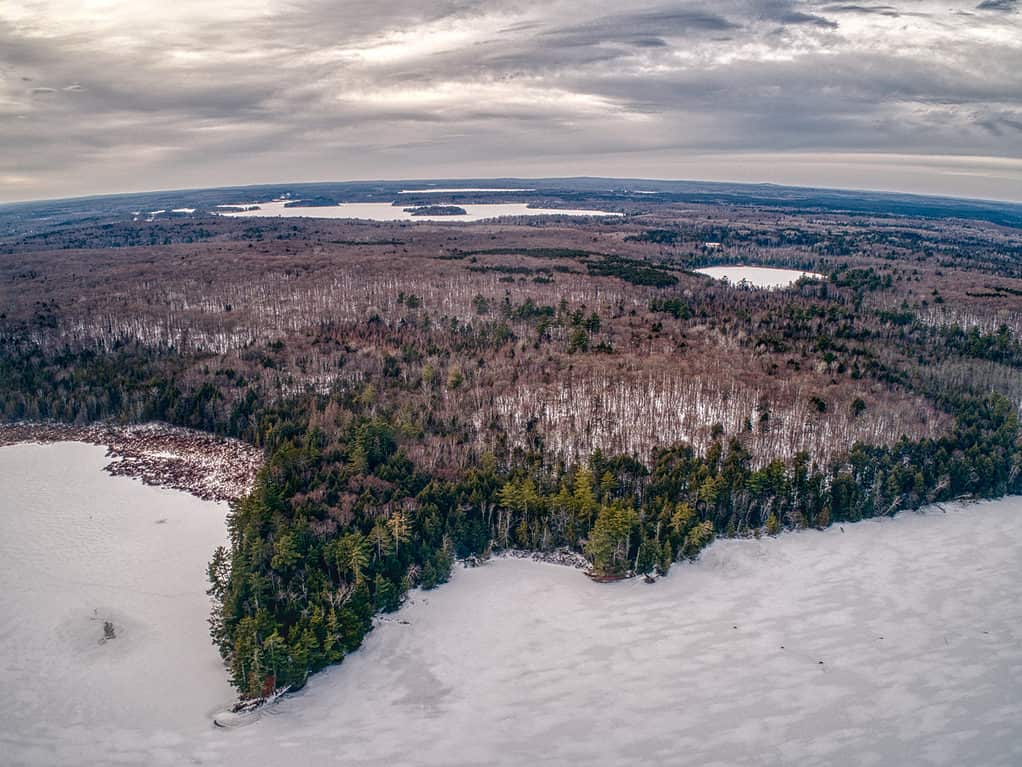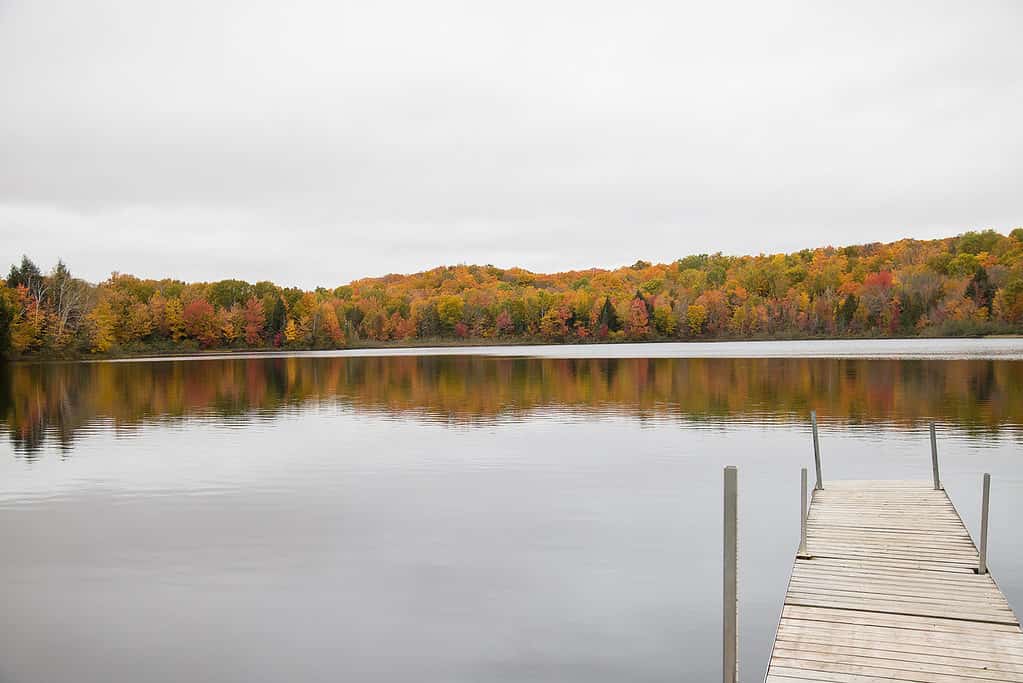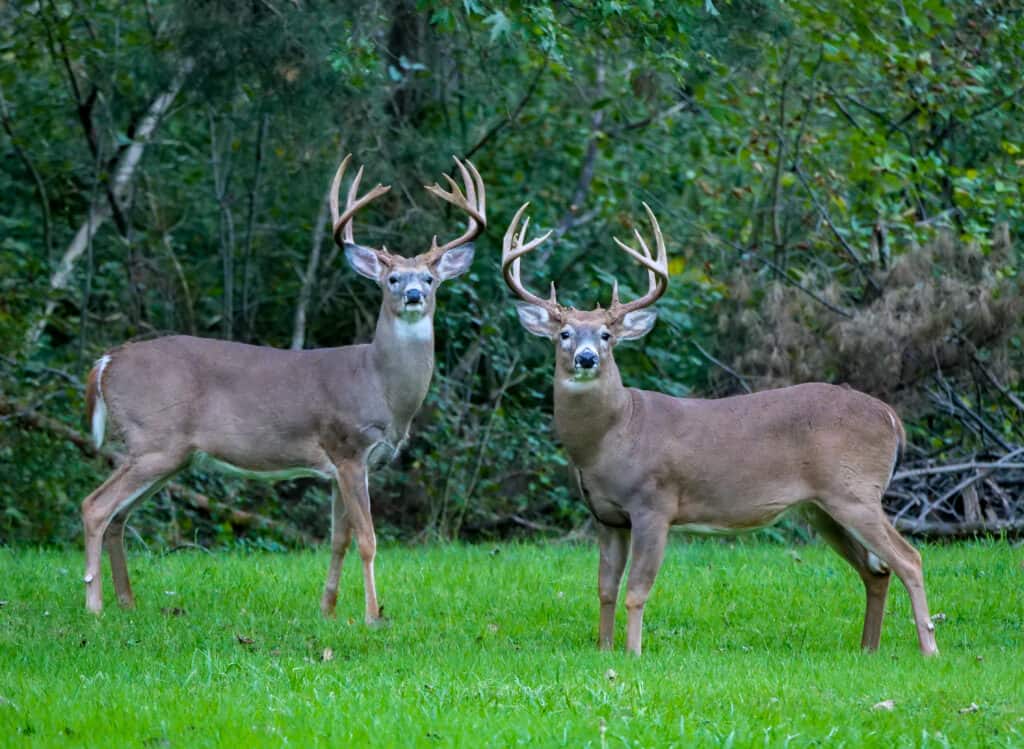Wisconsin, an upper midwest state, sits along two Great Lakes. It may be known for its dairy and farms, but Wisconsin is also a lush haven with immense greenery and abundant wildlife. The state contains 35 million acres of land, and almost 17 million of those are forested. Of the total land area, 46% is forestland. Discover the largest forest in Wisconsin, the animals that live within it, and recreation to enjoy within its boundaries.
What is the Largest Forest in Wisconsin?

©iStock.com/Jacob Boomsma
The Chequamegon–Nicolet National Forest is the largest forest in Wisconsin, covering 1.5 million acres. It is located in Northern Wisconsin, and while it is legally two separate national forests, they have been managed as one unit since 1998. The Chequamegon side is 858,400 acres and spans six counties. And the Nicolet side is 661,400 acres and also covers six counties. This North Woods ecoregion consists of wetlands, uplands, meadows, pine savannas, streams, rivers, and glacial lakes. Due to logging in the 20th century, this national forest does not contain much old-growth.
The USDA Forest Service manages Chequamegon-Nicolet Forest and uses it for recreation, fisheries, harvesting, wildlife habitats, forestry, and natural areas. But it is best known for recreation, drawing thousands of tourists every year for fishing, camping, hiking, and snow sports.
Things to Do in Chequamegon–Nicolet National Forest

©iStock.com/MJT Photography
Check out these most popular recreational activities in Chequamegon-Nicolet National Forest!
Camping
This national forest offers many campgrounds, from modern amenities with all the bells and whistles a campsite can offer to primitive and tranquil retreats for those wanting to be alone in nature.
Here are some of the best places to camp in Chequamegon-Nicolet Forest:
- Lost Lake Recreation Area
- Laura lake
- Luna White Deer campground
- Franklin Lake
- Headwaters Wilderness
Trails
With over a million acres, you will never run out of areas to explore. Checking the hiking trails is one of the best ways to experience the national forest. Walk the South Nicolet State Trail, spanning 89 miles, and stop at the Cathedral Pines State Natural Area, an old-growth pine-hemlock stand. Or check out the Chute Pond Overlook Trail, where you will find many scenic picnic spots.
Hunting
Hunting is part of Wisconsin’s heritage and a tradition for many families in the area. Big game hunting for animals like elk and deer is permitted in the Lakewood-Laona District. And small game hunting (pheasants, ducks, etc.) is allowed in the Eagle River-Florence District, Great Divide District, and the Lakewood-Laona District.
Cabins
Camping is wildly popular in the Chequamegon-Nicolet National Forest. You can choose from traditional tent sites, RVs, and cabins. Lost Lake Cabins are some of the most popular cabin rentals in the area and provide a retreat for families or a base site for hunting and fishing trips. The cabins are rustic and remote, but there is a recreation hall that provides restrooms and shower facilities.
Chequamegon–Nicolet National Forest Animals

©iStock.com/Ralph Navarro
The Chequamegon-Nicolet National Forest contains immense wildlife. Here are some of the most common animals you may see in the forest.
White-tailed Deer
There are numerous white-tailed deer in the forest, so much so that many are hit by motorists each year. While they are popular game animals, visitors enjoy seeing them prance about the meadows during their visit. They are a medium-sized deer species native to North America. You can find them across the United States, except for the Southwest. Typically, if you see one, there are several more within range.
Black Bears
Bear activity has been increasing in the forest over the last several years. Park officials warn visitors to follow safety recommendations and to be aware of their surroundings. Never feed a bear or leave food for them to find. These medium-sized bears are endemic to North America. And while they are relatively skittish and afraid of people, they still pose a threat to humans. Never run away or approach a black bear.
Gray Wolves
Wolves were reintroduced to the Chequamegon-Nicolet National Forest and their populations seem to be stable and growing. Wolf sightings are relatively rare in the forest, but they may become more common. Wolves live in packs in remote areas away from humans. However, you should still stay alert while hiking or hunting in their range. In 2019, a bear hound was killed by wolves in the forest.
Other animals in the forest:
- Foxes
- Rabbits
- Raccoons
- Beavers
- Otters
- Pheasants
- Grouse
- Elk
- Wild Turkeys
- Moose
Up Next:
- How Many Lakes Are in Wisconsin?
- Discover the Lowest Point in Wisconsin
- Discover the Coldest Place in Wisconsin
The post Discover the Largest Forest in Wisconsin (And What Lives Within It) appeared first on AZ Animals.
from Animal News, Facts, Rankings, and More! - AZ Animals https://ift.tt/GTuAkfF